
- Home
- About Us
- What We Do
- Partners
- ICAR-Indian Agricultural Research Institute, New Delhi
- ICAR-Indian Agricultural Statistics Research Institute, New Delhi (IASRI)
- ICAR-National Rice Research Institute, Cuttack (NRRI)
- ICAR-Indian Institute of Wheat and Barley Research, Karnal (IIWBR)
- ICAR-Central Institute of Cotton Research, Nagpur (CICR)
- ICAR-Indian Institute of Vegetable Research, Varanasi (IIVR)
- ICAR-National Research Centre on Banana (NRCB)
- ICAR-Indian Institute of Soil Science, Bhopal (IISS)
- ICAR- National Bureau of Soil Survey and Land Use Planning, Nagpur (NBSS&LUP)
- ICAR-Indian Institute of Water Management, Bhubaneshwar (IIWM)
- ICAR-Central Institute of Agricultural Engineering, Bhopal (CIAE)
- ICAR- Central Institute of Post-Harvest Engineering and Technology, Ludhiana (CIPHET)
- ICAR-National Dairy Research Institute, Karnal (NDRI)
- ICAR-Central Institute of Fisheries Education, Mumbai (CIFE)
- ICAR- Central Inland Fishery Research Institute, Barrakpore (CIFRI)
- ICAR- Central Institute of Fresh Aquaculture, Bhubaneswar (CIFA)
- Tools / Web Services
- Publications
- Gallery
- Committee
- Contact Us
Achievements
ICAR-National Research Center for Banana
To determine optimum moisture level at varied level of nutrients in banana, a field experiment was laid out at ICAR-NRCB farm in March 2022 and completed in March 2023. The differential application of water, N and K were designed and executed in cv. Grand Nain (Plate 1). In this experiment irrigation was controlled through drip irrigation and moisture was monitored through gravimetric method and interpolated with soil moisture release curve generated through pressure plate apparatus.
The results revealed that, the soil moisture deficit stress (- 0.3 MPa and – 0.5MPa) and nitrogen stress on cv.Grand Nain influences days taken for flowering. Soil moisture deficit stress delayed flowering by 13-15 days compared to irrigated control (soil moisture maintained near field capacity). Similarly, 15-17 days early flowering was recorded in N0 and N50 (RDF), compared to N100 (RDF) treatments. The varied level of K application not influenced the flowering. The yellowing of plant canopy were captured through drone aerial image. The bunch weight was significantly reduced to the tune of 14.74 to 18.24% in the soil moisture deficit treatments compared to irrigated control. There N50 and N75 application recorded significant higher yield compared to N100 under soil moisture deficit stress.
In May 2023 another field experiment was laid out to optimise the moisture level to irrigate the banana in cv. Grand Nain based on the IoT enabled moisture sensors. The IoT based soil moisture sensors and automated irrigation system has been installed (M/s. Digite Infotech Pvt. Ltd. Mumbai), in the experimental field (Plate -2). The irrigation system is automated and irrigation is done automatically based on root zone moisture set at 33, 50, and 75 KPa. At the end of crop season (March-April 2024) we may get information on the optimum level of moisture and nutrients for higher yield of banana.
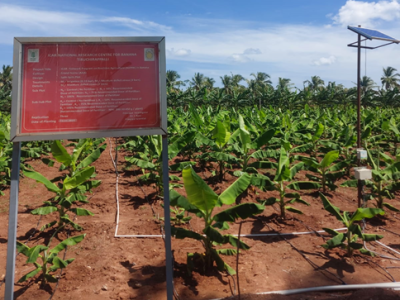
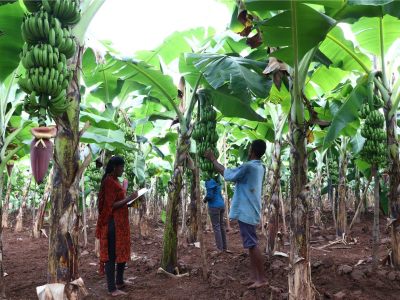
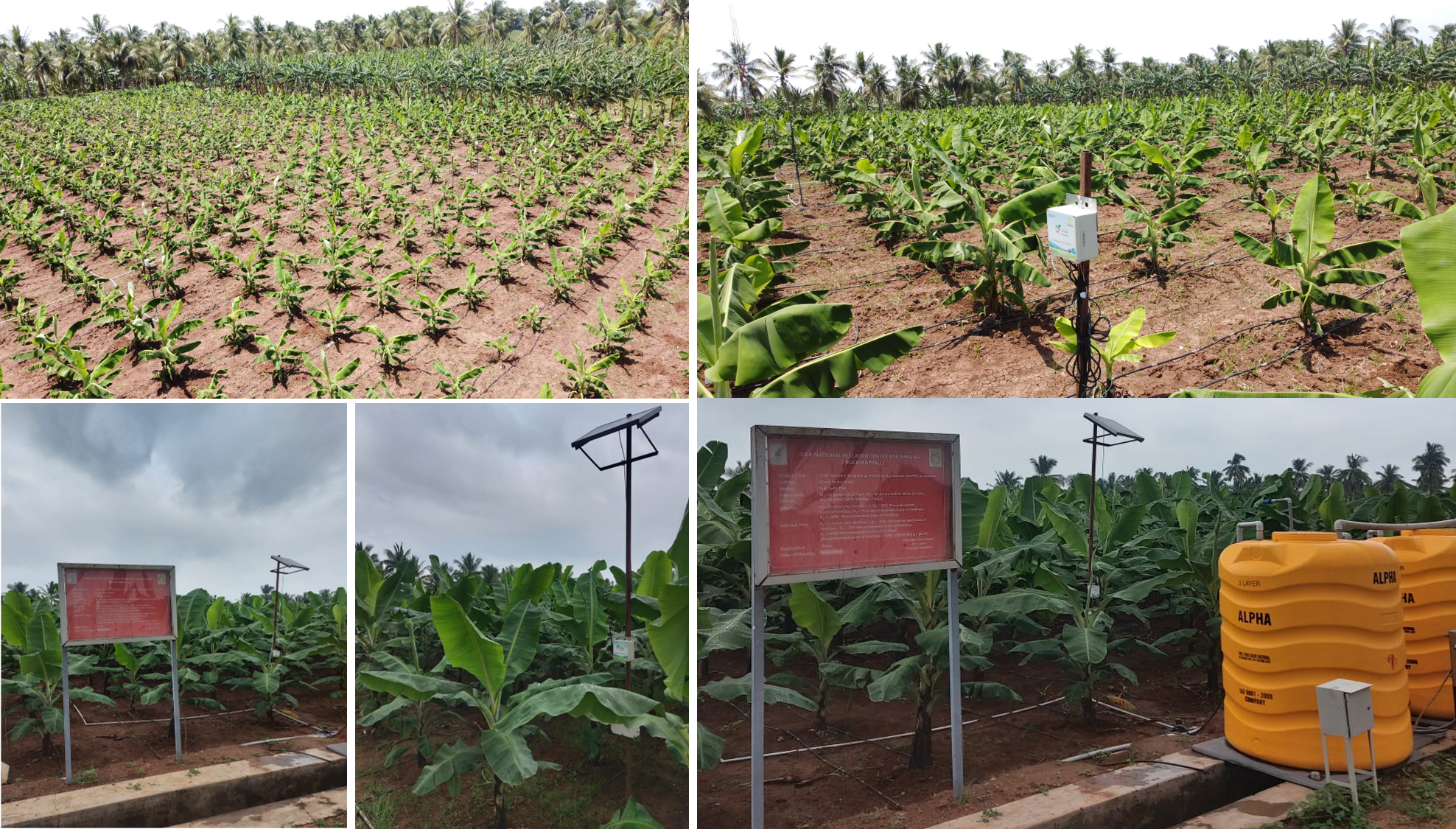
Image processing on Matlab software:
To create own datasets, Collected infected leaf images of sigatoka, cordona including healthy plants at different infection stages and other infected plant parts such as entire plants, leaves, with the help of well-trained banana experts using different cameras, mobile phones and UAV camera with various resolutions and images are captured in real field scenarios on banana farms. Datasets have we selected images are naturally appearing examples in field conditions that supported for creation of a diverse, robust own dataset, obtained under real field conditions. It is a multi-paradigm numerical computing environment and programming language. Here we used Matlab Neural network toolbox which makes it easier to use .classify the type of disease affected leaf. Leaf disease detection is a field of study under image recognition field of computer vision. The major thing, detection of diseases in leaf, which is also another important milestone in conserving and saving crops from disease spread. Deep Network designer which has aided the process and give the values with the available data set. Here we used this example shows how to fine-tune a pretrained Alex Net convolutional neural network to perform classification on a new collection of images. Image data store automatically labels the images based on folder names and stores the data as an Image Data store object. Alex Net is trained on more number images and can classify images into 3 class categories, such as Healthy, cordona and sigatoka. And a GUI was developed for disease detection using Mat lab App designer. Every month we captured images through Drone RGB camera and it processed into orthomosaic image by Using Agisoft metashape software.
Assessment of leaf spot and weather parameters
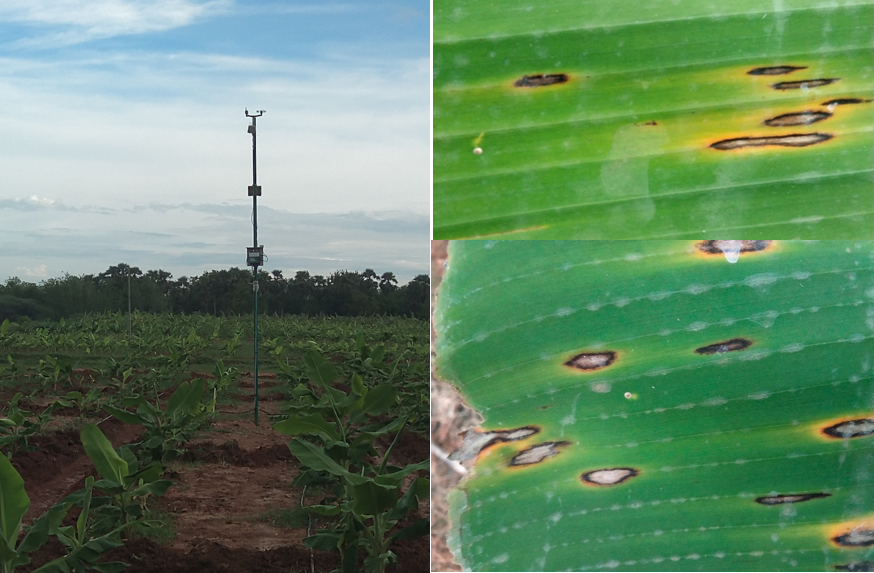
Soil Moisture Sensor developed and installed in collaboration with IIWM for Validation in the field

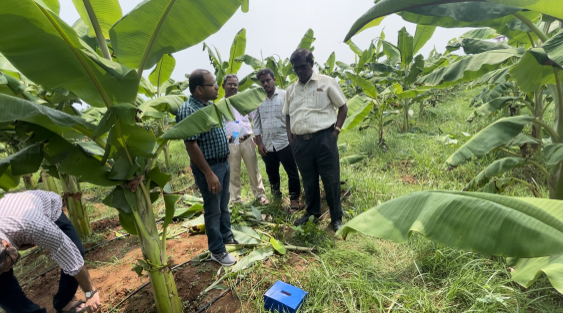
Mobile APK
Here we used App Inventor is a cloud-based tool, which means we can create apps for phones or tablets trained minimum number of leaf images .Then classify the images and predict the disease with affected accuracy in the mobile apk. The banana bunch top disease is mostly spread through aphid vector and mother plants. Monitoring the aphid population is challenging task as it has been influenced by many environmental factors, like wind, temperature and neighbouring field crop (like cotton, other vegetable and fruit crops).